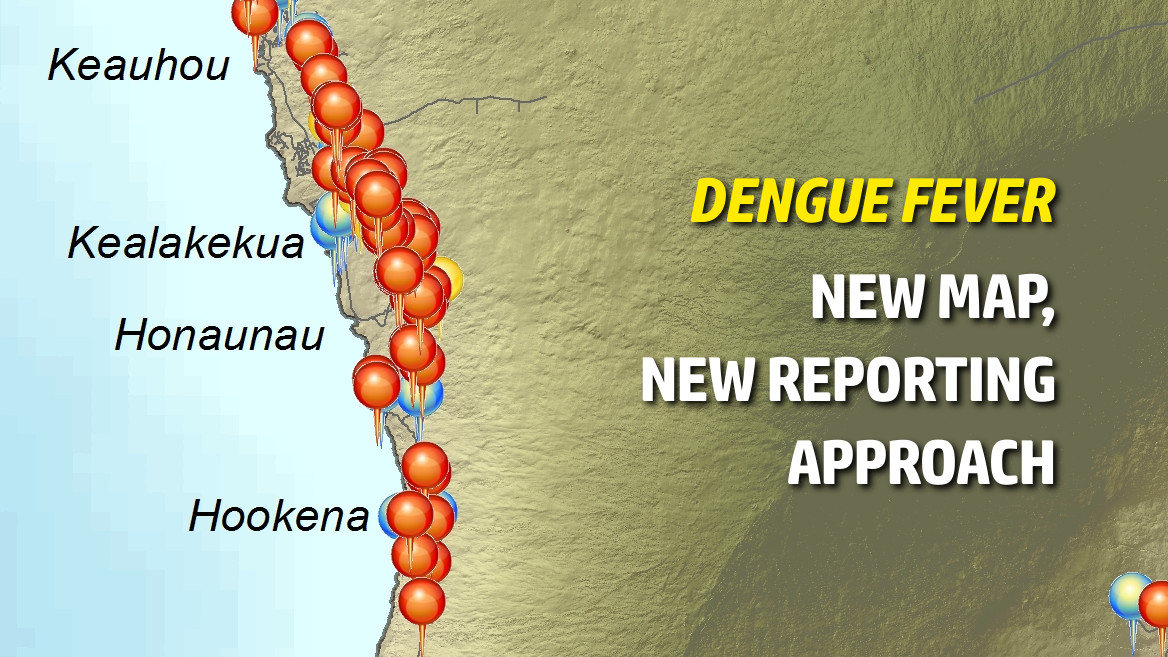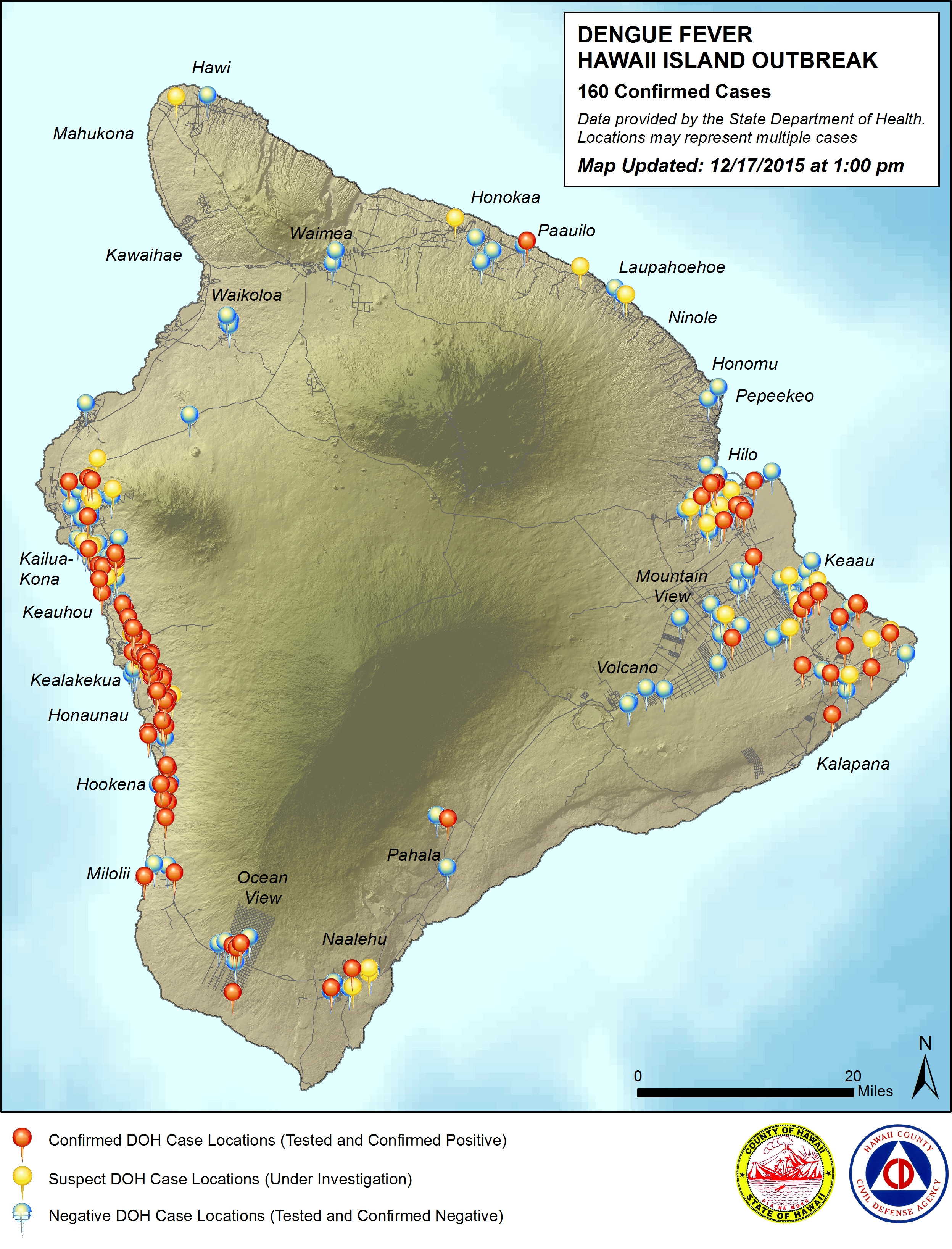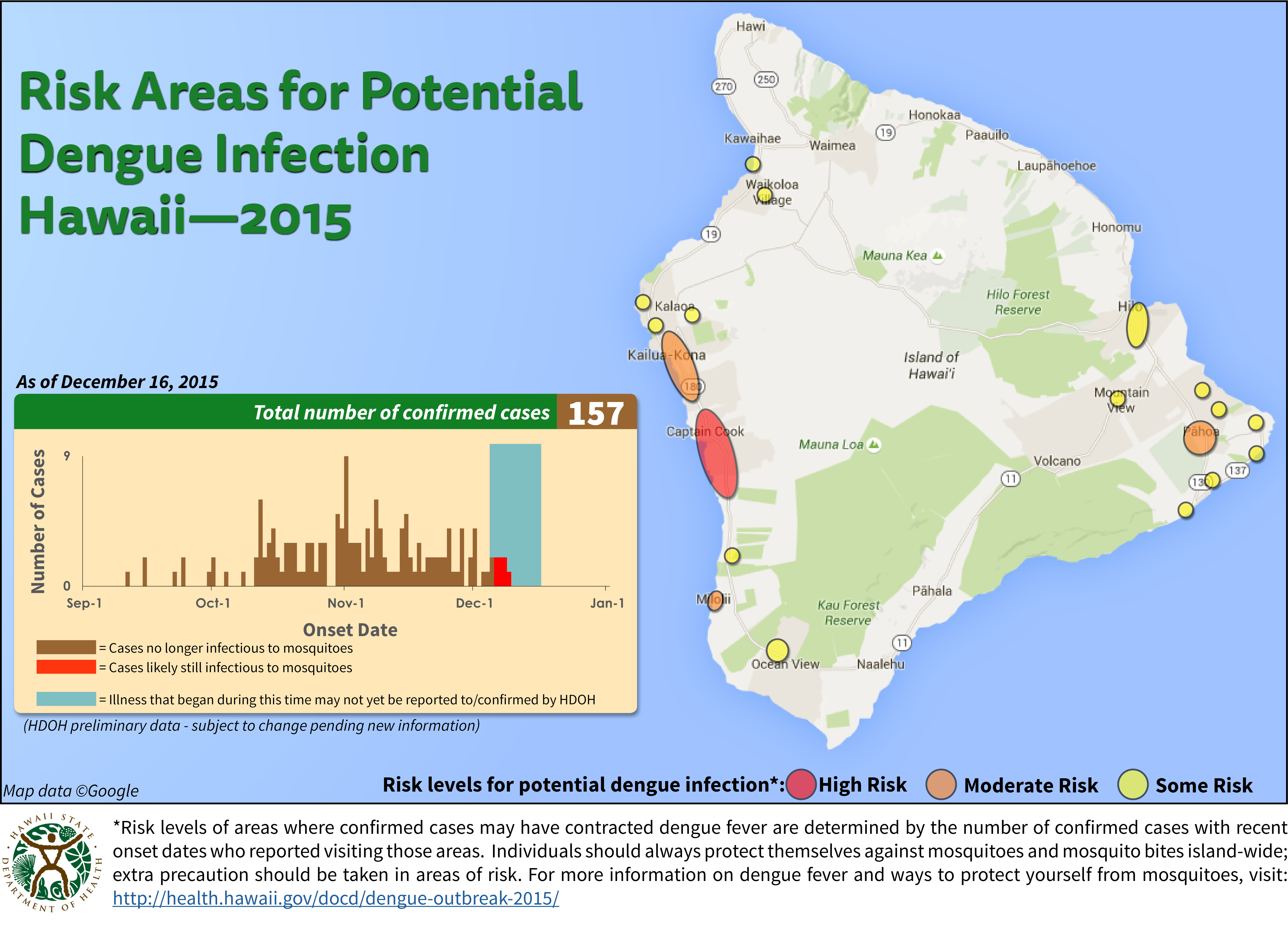
HAWAII ISLAND – As the number of cases of locally-acquired dengue fever on the Big Island of Hawaii rises to 160, the Hawaii Department of Health is changing its approach to reporting the numbers.
Officials are now clarifying which cases are potentially infectious, and which – the vast majority – are no longer contagious. Infectious cases could spread the sickness if they are bitten by mosquitoes, which could in turn spread dengue to another person.
For example, today the state says of the 160 cases reported since September, there are 5 cases that are potentially infectious, while the remaining 155 are no longer contagious.
The new approach to reporting the numbers can be found on the DOH website (screen grab below).

The change seems to be in response to continuous requests to know how many of the total confirmed cases could still spread the disease.
The state says that of the confirmed cases, 143 have been Hawaii residents and 17 have been visitors. 126 cases have been adults; 34 have been children under 18 years of age. The number of reported potential cases that were excluded based on test results and/or not meeting case criteria rose from 615 to to 627, officials report.
The Hawaii County Civil Defense released a new pinpoint map today, as well.
Dengue Fever Information UpdateThe State Department of Health continues to work with other state and county agencies on the issue of the Dengue Fever outbreak. As of 1:00 today the Department of Health had reported three additional confirmed cases since yesterday and bringing the total number of confirmed cases to date to 160. These cases include 143 residents and 17 visitors.
Dengue fever is a virus that is transmitted or spread by infected mosquitoes and not directly from person to person. Dengue Fever is not endemic or common to Hawaii. It was likely introduced by a person who contracted the virus in another area of the world and became infectious while in Hawaii.
Because dengue fever is only transmitted by mosquitoes, the Department of Health is spraying and treating areas with high mosquito presence and confirmed cases.
Although spraying and treatment of areas is ongoing, the most effective method to reduce the spread and eliminate Dengue is to fight the bite. Minimize or prevent the possibility of being bitten by an infected mosquito by wearing clothing that minimizes exposed skin, use mosquito repellant and avoid activities in areas of high mosquito concentration during the early morning and late afternoon periods when mosquito activity is greatest.
In addition, persons feeling ill and having a fever should remain indoors to prevent the possibility of being bitten and infecting mosquitoes.
For additional information on Dengue Fever and preventing the spread of Dengue Fever, go to health.hawaii.gov or call the Department of Health at 974-6001. Everyone’s help and assistance with this outbreak is much needed and appreciated.




by Big Island Video News2:12 pm
on at
STORY SUMMARY
HAWAII - As the number of cases of locally-acquired dengue fever on the Big Island of Hawaii rises to 160, the Hawaii Department of Health is changing its approach to reporting the numbers.